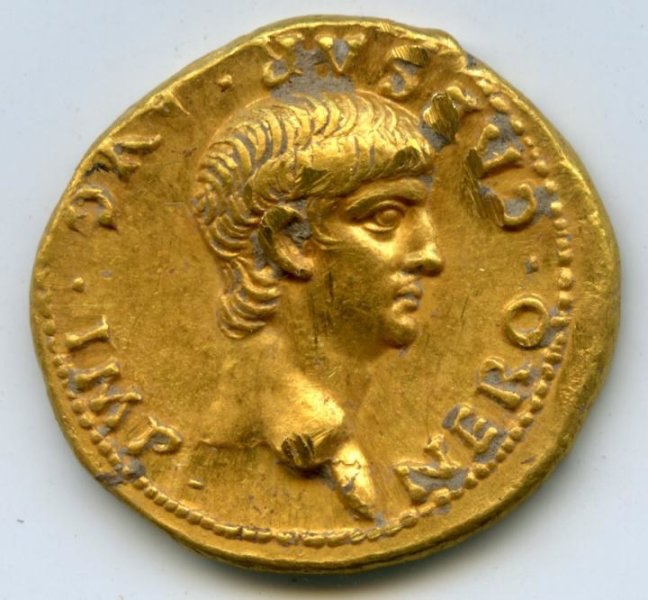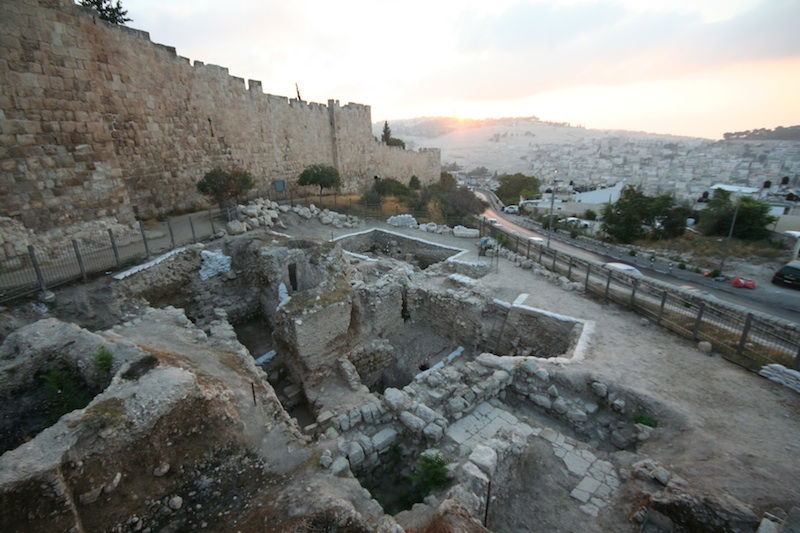Rare Gold Coin with Nero's Face Discovered in Jerusalem

Archaeologists have discovered an "exceptional" gold coin emblazoned with the Roman Emperor Nero's face at a site in Jerusalem.
The coin dates to around A.D. 60, shortly before the Romans destroyed Jerusalem in A.D. 70, sacking the city and tearing down the Second Temple, an important holy site for Judaism. It was discovered during excavations of Mount Zion and probably came from a Jewish home, according to archaeologists.
"The coin is exceptional," archaeologist Shimon Gibson said in a statement, "because this is the first time that a coin of this kind has turned up in Jerusalem in a scientific dig. Coins of this type are usually only found in private collections, where we don't have clear evidence as to place of origin." [The Holy Land: 7 Amazing Archaeological Finds]
The coin turned up in the ruins of wealthy villas from the first century A.D.
"These belonged to the priestly and aristocratic quarter located in the Upper City of Jerusalem," Gibson, an adjunct professor at the University of North Carolina at Charlotte, said of the homes. "Finds include the well-preserved rooms of a very large mansion, a Jewish ritual pool (mikveh) and a bathroom, both with their ceilings intact."

The mansion, discovered in 2013, contained a stash of Murex sea snail shells. These snails were the source of an expensive purple dye used during the first century A.D., and the discovery suggested that the Jewish priestly class may have been involved in regulating the dye-making industry, Gibson speculated at the time.
This wealthy neighborhood would have been destroyed along with the rest of Jerusalem in A.D. 70. The coin may have been hidden and missed by Roman soldiers during the siege, Gibson said.
Sign up for the Live Science daily newsletter now
Get the world’s most fascinating discoveries delivered straight to your inbox.
"It's a valuable piece of personal property and wouldn't have been cast away like rubbish or casually dropped. It's conceivable that it ended up outside these structures in the chaos that happened as this area was destroyed," he said.
The coin shows the Emperor Nero, who ruled from A.D. 54 to 68, in profile, surrounded by the inscription "NERO CAESAR AVG IMP." The back of the coin shows an oak wreath and the inscriptions "EX S C" and "PONTIF MAX TR P III." These inscriptions date the coin's creation to either A.D. 56 or A.D. 57.
Original article on Live Science.

Stephanie Pappas is a contributing writer for Live Science, covering topics ranging from geoscience to archaeology to the human brain and behavior. She was previously a senior writer for Live Science but is now a freelancer based in Denver, Colorado, and regularly contributes to Scientific American and The Monitor, the monthly magazine of the American Psychological Association. Stephanie received a bachelor's degree in psychology from the University of South Carolina and a graduate certificate in science communication from the University of California, Santa Cruz.
Why is yawning contagious?
Scientific consensus shows race is a human invention, not biological reality









